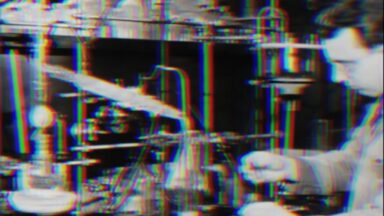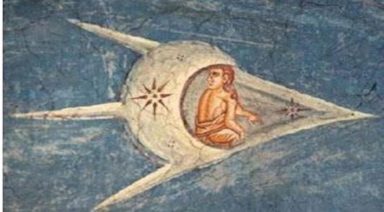These Esoteric Texts Could Unlock Hidden Powers

When it comes to ancient texts that are inherently magical or purport to contain instructions for conjuring spells or demons, Wicca typically comes to mind. However, there are enchanted books from many different religious and spiritual backgrounds known as grimoires.
Grimoires usually contain instructions for casting hexes, summoning spirits, and the general manifestation of the metaphysical. There are myriad grimoires, varying in provenance and nature that have formed the basis for different religions as well as occult practices. There are even grimoires that have yet to be deciphered and continue to elude cryptologists.
Despite the enigmatic essence of grimoires, one thing that is certain is they contain power beyond just the nature of their words, whether by producing actual magic or not. Derived from the word “grammar,” grimoires teach us how to combine words in a grammatical way to conjure and achieve otherworldly effects; they are essential to esotericism.
The Voynich Manuscript
The Voynich Manuscript is likely the most elusive and confounding grimoire of all. Carbon dating has shown that the manuscript can be placed back to the 15th century, during medieval times. Its modern popularity emerged after an antique book collector, Wilfred Voynich, bought it in Italy in 1912. Since then, the book has yet to be decrypted, despite having been put under the eye of the best cryptologists of the past century. Even during WWII, the most notable code breakers attempted, to no avail, to crack the cipher of this grimoire.
Written on 240 pages of calfskin, the book depicts astronomical charts, drawings of unfamiliar plants, and naked women in bathtubs. Those who have studied it have split it into five subject categories; astronomical, biological, herbal, pharmaceutical, and recipes.
Since the manuscript has yet to be enciphered, many have come to believe it to be a hoax. However, those who have analyzed the structure and syntax of the writing, believe that it shows similarities to known languages in the way that informational segments are grouped.
One theory about its cipher is that it is an anagrammed, micrographic shorthand, which consists of rearrangement of the order of letters, an abbreviation system taken from ancient Greece, and microscopic pen strokes within different characters that are shorthand for other letters. Another attempt at encryption, left in an encrypted message itself by a researcher that was revealed posthumously, said that the Voynich Manuscript was an attempt to create an artificial or universal language.

The Red Dragon or Grand Grimoire
The Red Dragon text, also known as the Great Clavicle of Solomon, is said to have been discovered in the tomb of King Solomon in the 18th century and is supposedly based on the writings of Honorius of Thebes, a mythical Greek character, claimed to have been possessed by the devil. The original copy of the Red Dragon is owned by the Roman Catholic church and is kept in a secret archive at the Vatican.
The Red Dragon’s function is for necromancy and summoning demons. Of course, since it deals with black magic, it was adopted by practitioners of voodoo, particularly in Haiti, where it is referred to as Le Véritable Dragon Rouge. It contains instructions to summon Lucifer, to make a deal with the devil. It is rumored to be fire-resistant.
The book is split into two segments with the first half, called the Sanctum Regnum, containing conjurations, invocations, and the tools needed to put a demon to work for you. The second book, called Secrets, instructs you how to make a pact with said demon without the aforementioned tools, however, it comes with greater risk – this is a demon you’re dealing with after all!

The Sixth and Seventh Book of Moses
These books are said to have been written by Moses himself. Contrary to the black magic of the Red Dragon, the sixth and seventh books provide instructions for creating miracles, like those performed in the Bible. It contains “seals,” or magical drawings with incantations for contacting the dead and biblical figures.

These books originated in the 18th century in Europe having roots in the Kabbalah. They quickly spread from Germany to North America thanks to the Pennsylvania Dutch. From there it’s influence became widespread in African American culture, creating the foundation of Rastafarianism and the basis of Hoodoo in the American South. Hoodoo is an African folk spirituality similar to voodoo, that was brought over during the slave trade from areas of western Africa and was used for conjuring spells, spiritual hypnosis, and paranormal contact.
The powers of grimoires are rooted all over the world in many disparate cultures. The extent of this power continues to be shrouded in mystery, especially for those that have yet to be deciphered.
Baba Vanga; Bulgarian Mystic's Predictions Parallel Nostradamus'

The world is familiar with Nostradamus, Edgar Cayce, Madame Helena Blavatsky, and many others defined as mystics, seers, and clairvoyants who through their special talents have predicted important moments in global and personal history. Yet another name can be added to this list who was one of the most revered and seminal figure in the world of mystics, specifically in terms of 20th century political and natural occurrences; a blind woman who spent most of her life in the remote Kozhuh mountains of Bulgaria – Vangeliya Pandeva Gushterova, otherwise known as “Baba Vanga.”
For many, she is considered to be one of the most powerful clairvoyants, as well as a gifted herbalist and healer. Who is this mysterious mystic? How have her predictions impacted our world and we see our future? One path to understanding her mysterious influence is to explore our eternal fascination with future-telling and the paranormal.



































